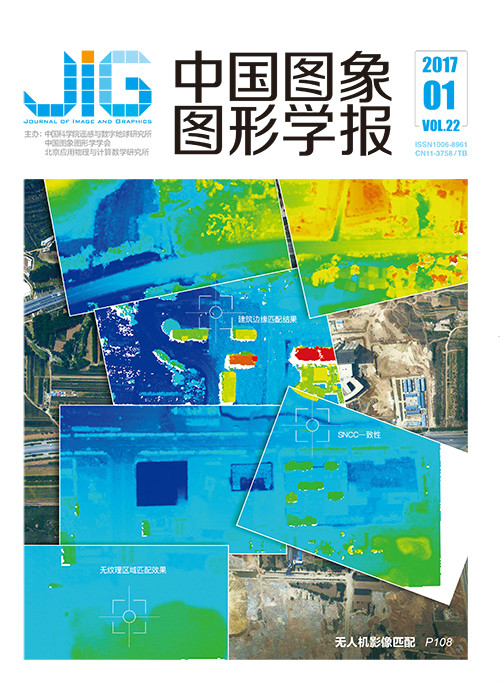
多失真混杂的无人机图像质量盲评价
摘 要
目的 面向多失真混杂的图像质量盲评价问题目前仍然是计算机视觉领域具有挑战性的工作之一,无人机图像受成像条件影响混杂多类失真,图像质量的准确评价是其效能发挥的关键环节。为此,引入并改进了基于自然场景统计的距离度量评价模型,提出多失真混杂的无人机图像质量盲评价方法。方法 从图像的结构性、信息完整性和颜色性3个不同的角度研究并提取了与无人机图像质量敏感的特征因子集;以实拍标准测绘图像库为原始图像获得MVG特性参数作为度量基准解决了盲评价中缺乏训练集的问题;构建了以实飞图像为样本的无人机图像质量数据库(UAV image set),为相关问题的研究提供数据集和评价参考。结果 针对所构建的数据库,本文算法在主客观一致性、算法运行时间上与其他算法进行了对比实验。相比较其他经典算法,本文算法的主客观一致性较高,达到了0.8以上,运行时间较快,过到1.2 s。此外本文还给出了块大小对算法影响以及单特征对图像的评价结果,证明算法选择的图像块大小和图像特征符合质量评价的需要。结论 针对无人机图像所包含的多失真构建质量评价综合模型,该模型可满足无人机图像质量需求。
关键词
Blind quality assessment for unmanned aerial vehicle images with multi-distortion
Abstract
Objective The problem of image quality assessment based on hybrid multi-distortion remains challenging in the computer vision field. Unmanned aerial vehicle (UAV) images are affected by the imaging conditions of hybrid multi-distortion. Accurate evaluation of image quality is critical in the performance of image quality assessment. An evaluation model of distance measurement based on natural scene statistics is introduced and improved, and a blind image quality assessment method for UAV with multi-distortion is proposed. Method The features of image quality sensitivity are studied and extracted from three different aspects of image structure, information integrity, and color. In reality standards of surveying and mapping an image library for an original image, Mualem-van Genuchten characteristic parameters are obtained as reference to solve the problem of blind evaluation lacking a training set. The UAV image quality database is constructed with a real fly image as sample, and the data set and evaluation reference are provided for studying the problems. Result In view of the constructed database, this paper makes a comparison between the subjective and objective consistency and the running time of the algorithm. Compared with other classical algorithms, the subjective and objective consistency of this algorithm is higher, reaching more than 0.8, Running time is faster, for 1.2 s. In addition, this paper also gives the effect of block size on the algorithm and the evaluation results of single feature to UAV images. This image block size and image feature which are selected by the algorithm are proved to meet the needs of quality evaluation. Conclusion In this study, a comprehensive model of quality evaluation for the multi-distortion of UAV images is constructed. This model can meet the requirements of UAV image quality.
Keywords
|



 中国图象图形学报 │ 京ICP备05080539号-4 │ 本系统由
中国图象图形学报 │ 京ICP备05080539号-4 │ 本系统由